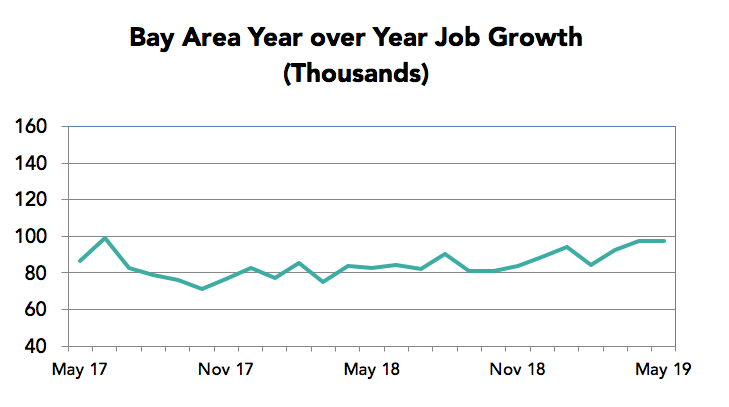
The highlights:
• The Bay Area added 10,000 jobs in May (seasonally adjusted), 100,000 jobs over the past year and accounted for 36% of statewide job growth.
• The job growth in May was led by gains in the San Francisco and San Jose metro areas.
• The regional unemployment rate fell to 2.3% and the number of unemployed workers fell to the lowest level since the recovery began.
• With job growth far outpacing population and labor force growth, where are the workers coming from and can it continue?
The Bay Area Continues to Outpace the State and Nation in Job Growth
Year over year job growth of 2.4% far outpaced the 1.6% growth for the nation and state.
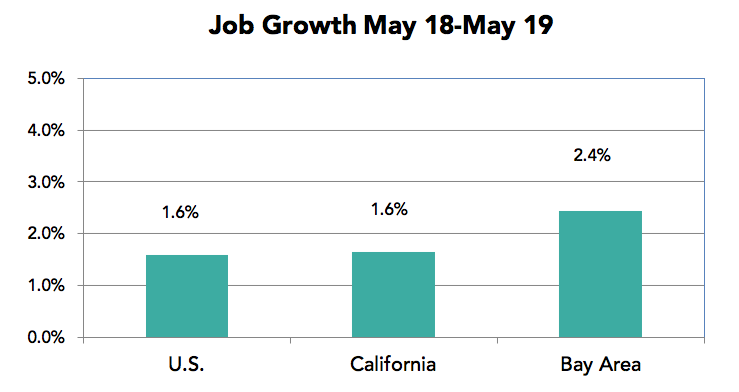
The San Francisco metro area led the region in job growth over the past 12 months followed by the San Jose metro area.
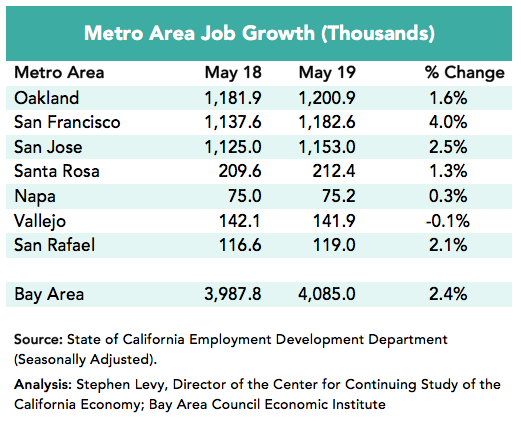
Unemployment rates fell to 2.3% in May 2019 compared to 2.4% in May 2018 with year over year declines in most metro areas. It is hard to see these rates falling much further, which combined with the slowing labor force growth raises the questions of where the workers for future job growth will come from.
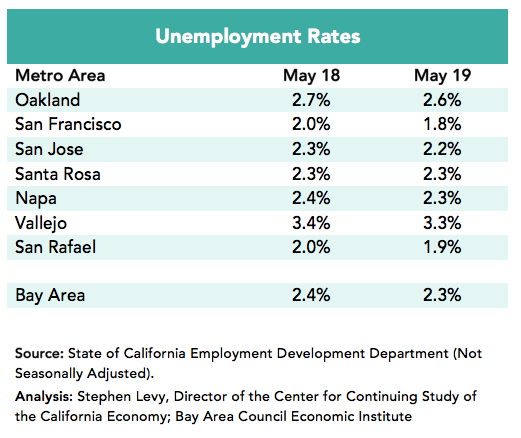
Regional labor force growth slowed in May and at 0.5% is far below the 2.4% regional job growth. Note that monthly labor force estimates are volatile.
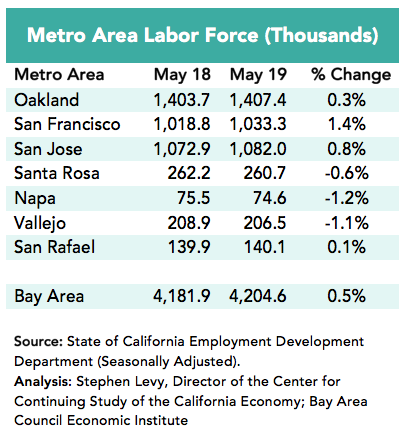
Year over year job growth has remained in a narrow range since early in 2017. This occurred despite slowing population growth and rising outmigration in the face of high housing costs. In May year over year job gains hit the top of the recent range.
The job growth is far higher than population and labor force growth and the year over year decline in unemployment was small.
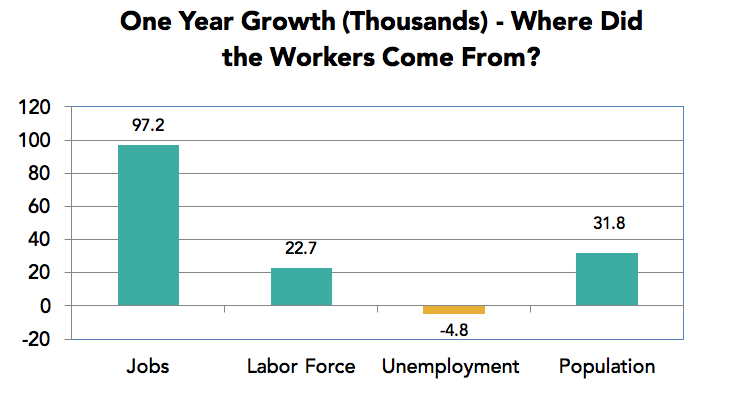
If these numbers are real, the implication is a large increase in commuting into the region. Currently data does not exist to confirm or refute this possibility. The increase in in-commuting is very large and future months and possible data revisions will shed more light on where the workers came from to support the large regional job growth. It is an important question to answer.
Housing permit levels declined in the first five months of 2019 after an upward trend in 2018 though most of those gains came in the first six months of the year and in Sonoma County, site of the fire damage.
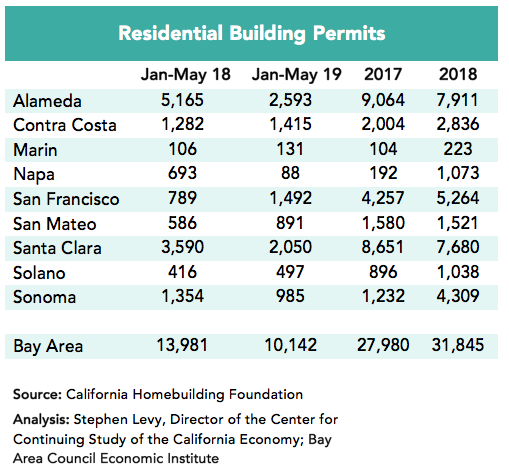
There is some evidence that the surge in resale home prices has slowed though that is a separate market from the rental market and even more separate from funding and approval for BMR units.
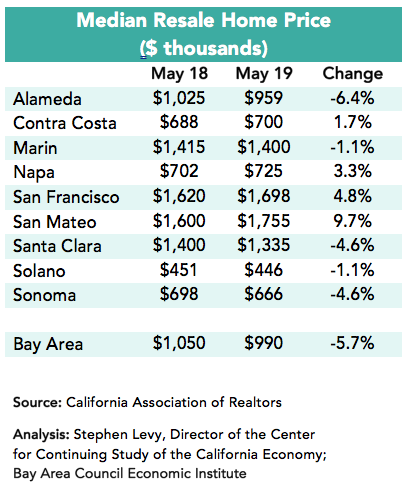
So the region will continue to struggle to find new workers as increasingly they will come from people moving to the region, which has become difficult given the housing shortage and high housing costs. The struggle to attract and house new workers will happen as 1 million Bay Area residents retire by 2030. Below is a link to the blog on this topic I wrote for SPUR.
https://www.spur.org/news/2019-01-17/how-retirement-wave-will-impact-bay-area-jobs-and-workers.
The region has reached the point where future labor force growth will need to come mainly from new residents and new housing. Higher levels of labor demand based immigration will be needed and transportation links from adjacent counties including a Central Valley to San Jose link would help.
The next needed steps involve lowering the cost of building new housing, changing zoning to allow more and less expensive housing to be built and, hopefully, state funding to offset some costs of housing. Perhaps the hardest challenge to overcome is the lack of affordable housing for middle income residents who are not eligible for subsidized housing even if it were available in sufficient quantity.
The bottom line, which should be understandable to Bay Area Council members, is that it is really hard if not impossible under current rules to build housing that is affordable to middle income residents yet pencils out for developers.
Readers can follow the ongoing local, regional (CASA) and state (SB 50 and other housing bills) efforts as the need for action becomes clearer each week.
SPUR published an estimate of the regional housing shortage at https://www.spur.org/news/2019-02-21/how-much-housing-should-bay-area-have-built-avoid-current-housing-crisis and has ongoing efforts in this area as does the Bay Area Council.